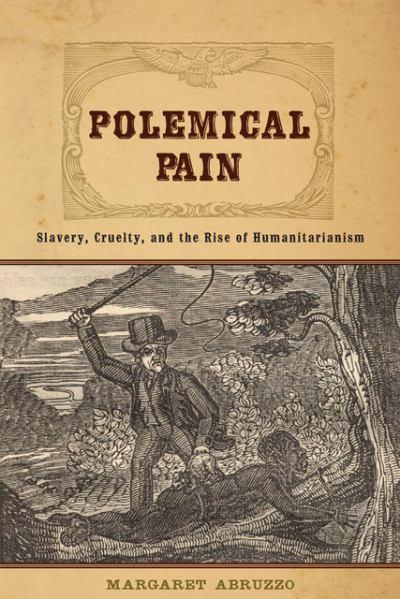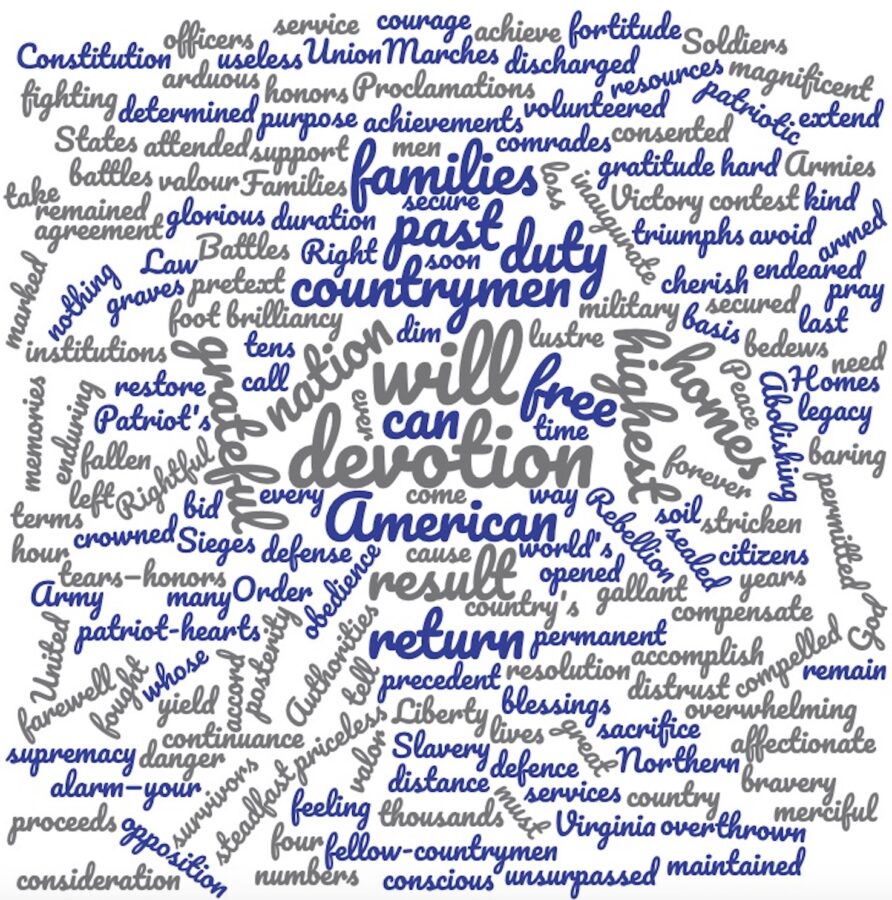Polemical Pain: Slavery, Cruelty, and the Rise of Humanitarianism by Margaret Abruzzo. The Johns Hopkins University Press, 2011. Cloth, ISBN: 0801898528. $55.00.
 Long before Americans, North and South, commenced to shooting each other over slavery and the state of the nation, a related battle raged over the definition of humanitarianism; one that increasingly involved the burgeoning sectional crisis and its debate over slavery. Margaret Abruzzo centers this battle in her cross hairs as she outlines the origins, evolution, and disparate impacts of American humanitarian thought in the eighteenth and nineteenth centuries. Citing dual intellectual origins—in Quaker morality and Scottish moral philosophy—Abruzzo delineates how notions of cruelty and pain became increasingly pivotal to moral reasoning and shaped the foundation and framework for modern American humanitarianism. She illustrates this intellectual evolution through the slavery issue, concluding that humanitarian thought intensified this debate and exacerbated the sectional crisis that ultimately led to Civil War.
Long before Americans, North and South, commenced to shooting each other over slavery and the state of the nation, a related battle raged over the definition of humanitarianism; one that increasingly involved the burgeoning sectional crisis and its debate over slavery. Margaret Abruzzo centers this battle in her cross hairs as she outlines the origins, evolution, and disparate impacts of American humanitarian thought in the eighteenth and nineteenth centuries. Citing dual intellectual origins—in Quaker morality and Scottish moral philosophy—Abruzzo delineates how notions of cruelty and pain became increasingly pivotal to moral reasoning and shaped the foundation and framework for modern American humanitarianism. She illustrates this intellectual evolution through the slavery issue, concluding that humanitarian thought intensified this debate and exacerbated the sectional crisis that ultimately led to Civil War.
By situating conceptions of pain and cruelty at the center of her analysis, Abruzzo convincingly illustrates how over the course of the eighteenth and nineteenth centuries, the infliction of unnecessary pain came to signal base immorality in most of the western world. In America, she grounds this intellectual trend in the moral system of the Society of Friends, which deemed unnecessary cruelty an outward sign of inner immorality. When applied to slavery, this emphasis on wanton cruelty became a litmus test for white society’s moral standing, while scarred black bodies became visible signs of white moral decay. For Abruzzo, this early emphasis on white morality over black victimization fundamentally shaped subsequent American humanitarianism.
American Quakers were not the only source of humanitarian thought; Scottish moral philosophy proved equally prominent. According to Abruzzo, this moral philosophy provided a fledgling American humanitarianism with its view of human nature; one divided between the longstanding concept of original sin and one of natural benevolence and moral progress. When applied to the American slave system—in tandem with Quaker morality—this division bequeathed to American humanitarian thought an internal tension. One perspective sympathized with victims of all pain, while the other sought to minimize the infliction and alleviate the effects of unnecessary pain, expressed through the language of benevolence.
This divide, epitomized in the languages of sympathy and benevolence, molded all subsequent humanitarian perspectives on American slavery. Ideas of humaneness came to define various perspectives on the issue. Slaveholders emphasized their benevolence as masters and pointed to market capitalism’s cruel neglect of the laboring class. Their antislavery opponents, meanwhile, identified the cruelty of slaveholders’ labor demands, discipline, and punishment as the source of social corruption, a corruption that encouraged immorality among slaves, slaveholders, and all in the nation as long as it countenanced slavery.
This divide, as Abruzzo explains it, was not without its ambiguities. As both sides in the slavery and sectional debate drew from a common humanitarian intellectual heritage, internal divisions within these arguments further complicated the debate and its proposed solutions. In the South, some extended the logic of benevolence to its ultimate extreme, arguing that slavery saved African slaves from barbarism, heathenism, and exposed them to civilization. As a result, some proslavery advocates concluded that the African slave trade itself—abolished in 1808—should be reopened to extend this benevolence. Antislavery advocates likewise exhibited internal division, as abolitionists opposed the humanitarian overemphasis on slaveholder cruelty as counterproductive, arguing that it obscured the more important issue of black victimization and the denial of fundamental human rights to black slaves. Thus, rather than assuage the slavery debate and sectional crisis, Abruzzo argues that American humanitarianism intensified both to the point that Civil War seemed the only remedy.
Abruzzo charts this complex history of American humanitarianism and its relationship to American slavery through impressive and exhaustive primary research. In doing so, she breathes new life into seemingly well-worn primary sources such as proslavery and antislavery tracts, plantation journals, and abolitionist newspapers. Forwarding a fresh analytical perspective focused on the intellectual development of humanitarianism, Abruzzo recasts several age-old historical debates over the nature of the sectional crisis and Civil War causation. Recent works by George Rable (God’s Almost Chosen Peoples, 2010) and Sean A. Scott (A Visitation of God, 2011) confirm and corroborate much of what Abruzzo argues here, though they employ the lens of religious morality to reach similar conclusions; Americans North and South drew upon a common moral heritage to arrive at widely divergent conclusions regarding racial slavery, American progress, and ultimately a bloody Civil War.
By placing the slavery debate within the larger evolution of humanitarian thought, Abruzzo highlights the common intellectual moorings of antebellum Americans—an analytical emphasis that reinvigorates several longstanding historical inquiries, from religion to reform to intellectualism. The result is a significant reappraisal of Civil War causation and an important contribution to the broader history of the emergence of the modern United States.
James Hill Welborn III is a Doctoral Candidate in History at the University of Georgia.
